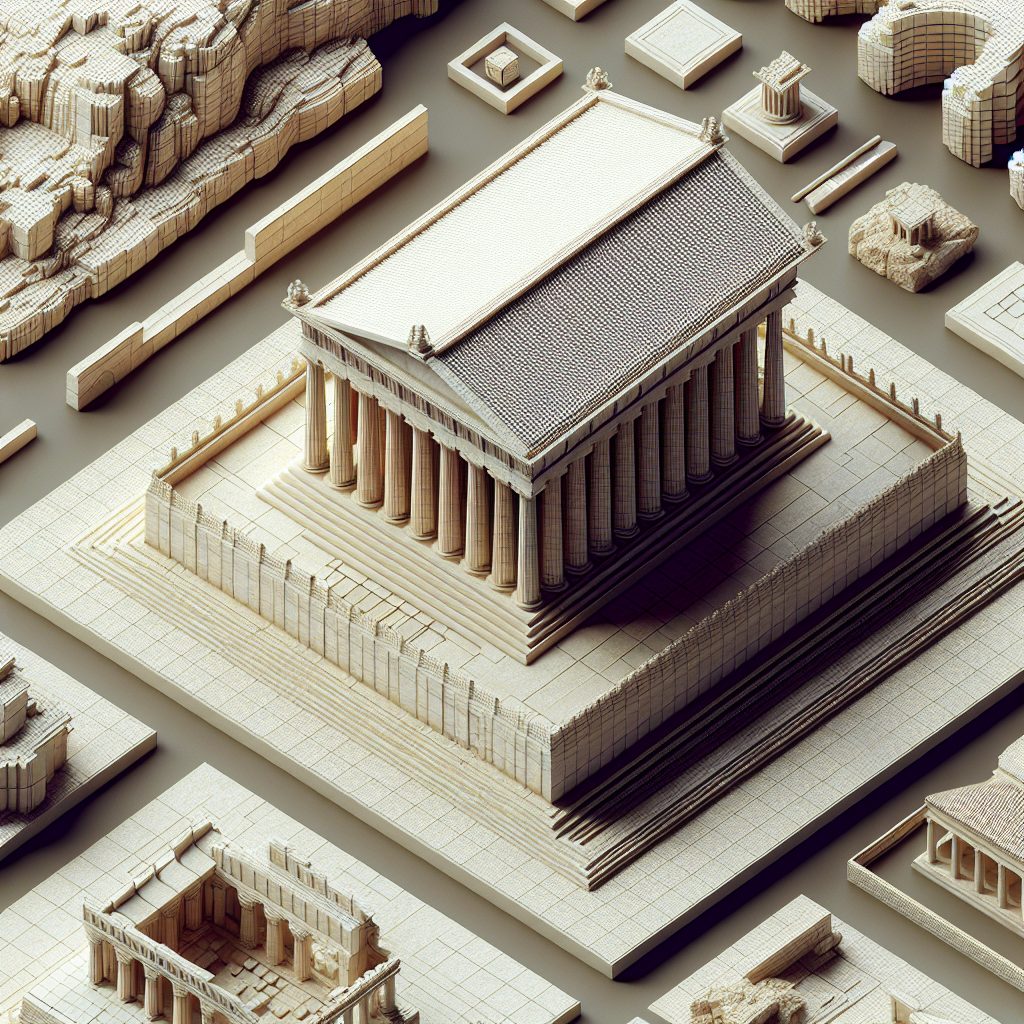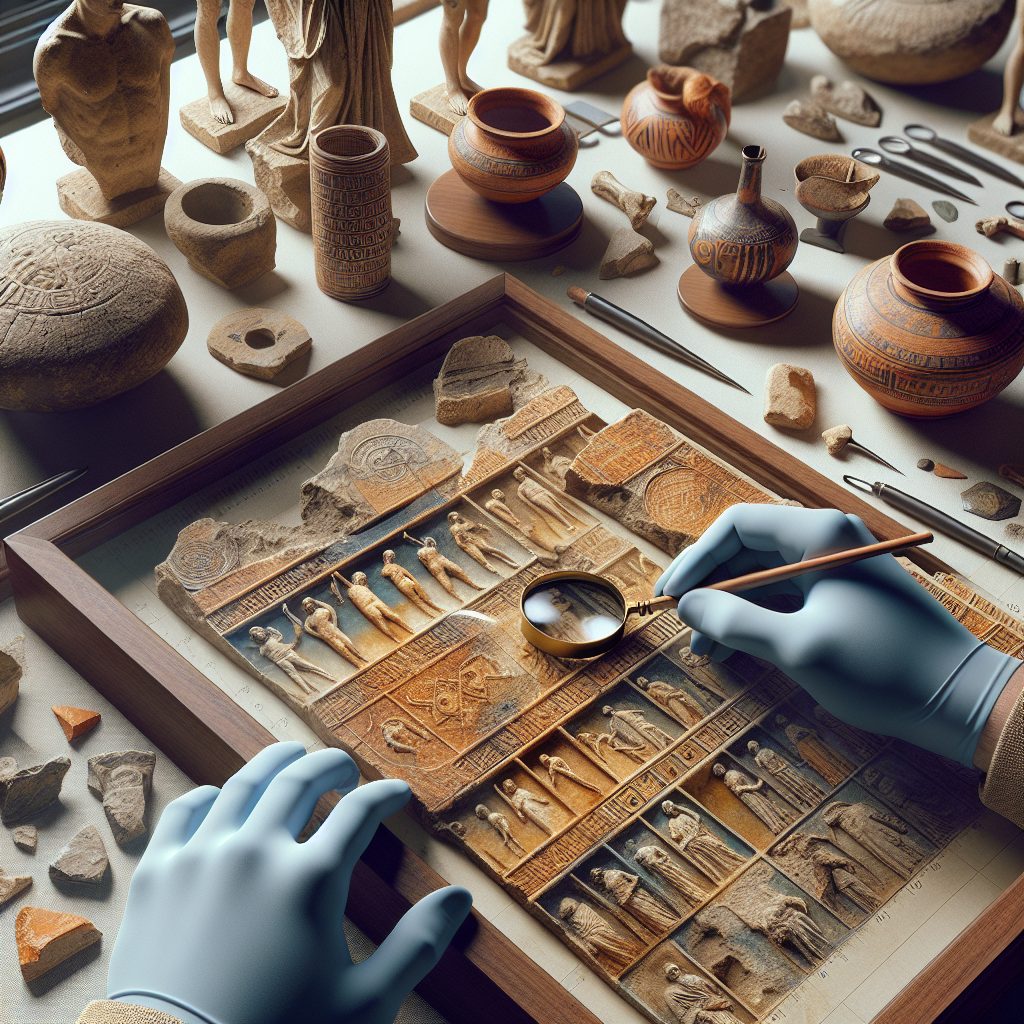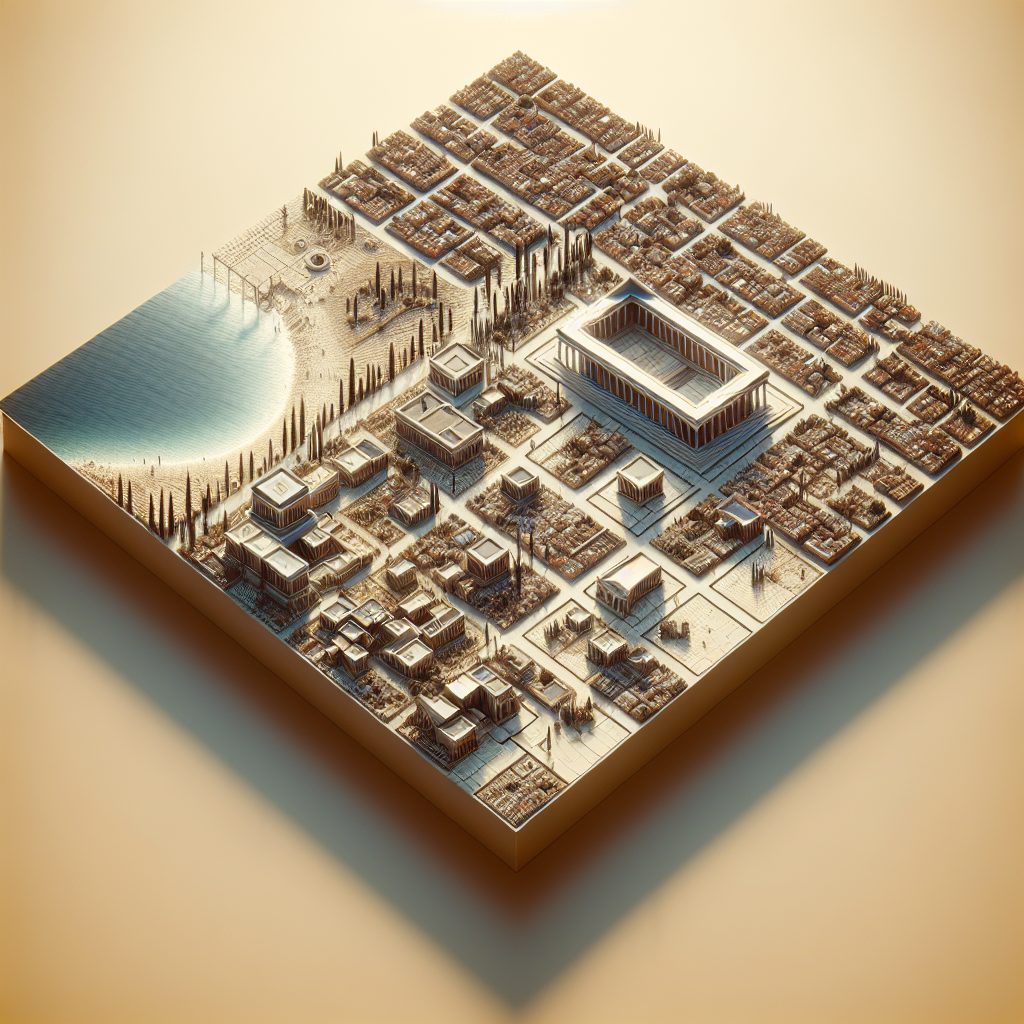Tharros ancient structures offer a fascinating glimpse into the rich history and cultural heritage of Sardinia. Dating back to the 8th century BC, Tharros was an important Phoenician city and later became a Roman colony. The site’s unique location on a narrow peninsula overlooking the Mediterranean Sea adds to its allure, presenting visitors with breathtaking views and a sense of connection to the past.
One of the unique features of Tharros is its impressive architectural remains. The site showcases a mixture of different architectural styles and periods, reflecting the influences of various civilizations that once inhabited the area. From the well-preserved paved streets and Roman aqueducts to the remains of temples and defensive walls, Tharros provides a tangible link to the past. Walking through the ancient site, visitors can imagine the vibrant life that once thrived here and gain a deeper appreciation for the ancient skills and craftsmanship of these early civilizations.
In the upcoming section, we will delve into the key takeaways from exploring the Tharros ancient structures. We will discuss the significance of the archaeological findings at the site, highlighting the unique insights they provide into Sardinia’s historical development. Moreover, we will explore the impact of Tharros on tourism in the region, focusing on how this ancient site attracts visitors from around the world and contributes to the local economy. Join us as we unravel the mysteries of Tharros and uncover the secrets of this remarkable ancient settlement.
Key Takeaways
1. Tharros, an ancient coastal city in Sardinia, Italy, boasts a remarkable collection of well-preserved ancient structures from various historical periods, including Phoenician, Punic, and Roman civilizations, providing valuable insights into the region’s rich history.
2. The Phoenician settlement in Tharros dates back to the 8th century BC, and its structures display distinct architectural features like rounded stones and narrow passageways, showcasing the influence of this ancient civilization.
3. The Punic period introduced fortified buildings in Tharros, characterized by thick walls and strategic positioning overlooking the sea, indicating the city’s importance as a trade hub during this era.
4. During the Roman period, Tharros experienced significant expansion and transformation. Notable structures from this time include a grand theater, monumental baths, spacious villas, and a suovetaurilia, which was a sacred area for animal sacrifices.
5. Tharros is not only a remarkable archaeological site but also a place of immense natural beauty. Situated on a peninsula, it offers breathtaking coastal views and opportunities for leisure, making it a rewarding destination for history enthusiasts and nature lovers alike.
What are the Key Features of Tharros Ancient Structures?
Historical Significance
Tharros, located on the western coast of Sardinia, Italy, is an archaeological site that dates back to the 8th century BC. It was a bustling Phoenician and Roman city, serving as a crucial trade hub in the Mediterranean. The ancient structures found in Tharros provide valuable insights into the history, culture, and architectural achievements of these civilizations.
Layout of the City
The city of Tharros was strategically planned and organized, featuring a fortified coastal area, residential districts, temples, necropolises, and public spaces. The city’s layout exemplifies the urban planning skills of the ancient inhabitants and their emphasis on functionality, aesthetics, and social structure.
Fortifications and Defensive Structures
To safeguard the city from potential invasions, Tharros was fortified with defensive structures such as walls, towers, and gates. These sturdy defensive measures were constructed to protect the city and symbolize its strength and power. Exploring the remains of these fortifications enables historians and archaeologists to understand the military strategies and technologies employed during that era.
Temples and Religious Structures
Tharros boasts several temples and religious structures dedicated to various deities worshipped by the Phoenicians and Romans. These structures often exhibit intricate architectural details, including impressive columns, altars, and sculptures. They serve as testament to the religious beliefs, rituals, and cultural practices prevalent in ancient Tharros.
Residential Areas and Housing
The residential areas in Tharros provide a glimpse into the daily lives of its inhabitants. Excavations have revealed modest dwellings as well as grand residences belonging to the wealthy. These ancient houses showcase architectural elements, such as courtyards, mosaic floors, and water systems, shedding light on the living standards and societal aspects of Tharros.
Engineering Marvels and Infrastructure
Tharros demonstrates the advanced engineering skills possessed by its ancient inhabitants. The city features an intricate network of roads, aqueducts, and sewage systems, revealing the level of sophistication achieved in urban planning and infrastructure development. Studying these engineering marvels allows us to understand how these civilizations handled technical challenges and urban management.
Port Structures and Maritime Culture
Given its coastal location, Tharros had a thriving maritime culture. The remains of port structures, including docks, piers, and warehouses, highlight the importance of maritime trade and navigation in the city’s economy. These structures also reveal the maritime expertise possessed by the people of Tharros.
Necropolises and Burial Practices
The necropolises surrounding Tharros provide fascinating insights into ancient burial practices and funerary customs. Elaborate tomb complexes, sarcophagi, and funerary inscriptions reveal the belief systems, social hierarchy, and religious rituals associated with death and commemoration in Tharros.
Preservation Efforts and Archaeological Excavations
Over the years, Tharros has undergone extensive archaeological excavations and preservation initiatives to protect its ancient structures. Organizations and institutions continue to work tirelessly to restore, document, and interpret these valuable remnants of the past. These efforts ensure that future generations can appreciate and learn from the history and cultural heritage of Tharros.
What to Consider When Visiting Tharros?
- Wear comfortable shoes as there is a considerable amount of walking involved in exploring the site.
- Bring sun protection, as Tharros can get quite hot during the summer months.
- Take guided tours to gain a comprehensive understanding of the historical context and significance of the ancient structures.
- Respect the site by not removing or damaging any artifacts or structures.
- Consider visiting the nearby Tharros Museum to further enhance your understanding of the site and its artifacts.
Frequently Asked Questions
1. What are Tharros ancient structures?
Tharros ancient structures refer to the ruins and remains of an ancient Phoenician city located on the west coast of Sardinia, Italy. These structures include temples, houses, defensive walls, and other archaeological remains.
2. How old are the Tharros ancient structures?
The Tharros ancient structures date back to the 8th century BC when the city was founded by the Phoenicians. The site has seen various civilizations inhabiting and influencing it over the centuries, including the Carthaginians and Romans.
3. What can visitors expect to see at Tharros?
Visitors to Tharros can expect to see well-preserved ruins, such as the remains of the ancient city walls, the Temple of Tharros, Roman baths, mosaic floors, and remnants of houses. The site offers a unique glimpse into the history and culture of ancient civilizations.
4. Are there guided tours available at Tharros?
Yes, there are guided tours available at Tharros. Local experts and archaeologists offer informative tours that provide in-depth knowledge about the ancient structures, their significance, and the history of Tharros as a whole.
5. Can I visit Tharros on my own?
Absolutely! Tharros is open to the public and visitors are allowed to explore the ancient structures on their own. However, it is recommended to gather prior information about the site’s history and significance to fully appreciate what you’ll be witnessing.
6. Is there an entrance fee for Tharros?
Yes, there is an entrance fee for Tharros. The fee contributes to the maintenance and preservation of the site. The exact fee may vary, so it’s always advisable to check the latest information before planning your visit.
7. Are there any visitor facilities at Tharros?
Yes, Tharros provides basic visitor facilities, such as restrooms, parking areas, and information boards. However, it’s worth noting that the site is primarily an archaeological area, so extensive visitor amenities might be limited.
8. Can Tharros be visited by people with mobility restrictions?
Tharros, being an archaeological site, can pose challenges for people with mobility restrictions. The terrain may be uneven and certain areas may involve climbing stairs or navigating rocky paths. It’s recommended to contact the site in advance to inquire about accessibility options.
9. Is photography allowed at Tharros?
Yes, photography is generally allowed at Tharros. Visitors are encouraged to capture the beauty and historical importance of the ancient structures. However, it’s important to abide by any specific rules or restrictions mentioned on site regarding photography.
10. Can I bring food and drinks to Tharros?
While Tharros doesn’t have designated picnic areas or dining facilities, visitors are generally allowed to bring their own food and drinks. Just make sure to dispose of any waste responsibly and respect the historical significance of the site.
Final Thoughts
Tharros ancient structures stand as a testament to the remarkable civilizations that once thrived in this coastal region of Sardinia. Exploring the ruins allows us to step back in time and appreciate the architectural and cultural achievements of the Phoenicians, Carthaginians, and Romans. Witnessing the remnants of temple walls, mosaic floors, and other archaeological wonders sparks a sense of awe and curiosity about the past.
The preservation and accessibility of Tharros provide an exceptional opportunity for visitors to immerse themselves in history and gain a deeper understanding of the ancient world. Whether it’s exploring on your own or joining a guided tour, the experience is sure to leave you with a profound appreciation for the archaeological wonders of Tharros and the people who built them. Discovering Tharros is like unwrapping a time capsule, revealing the layers of civilization that have shaped our present-day understanding of the past.






